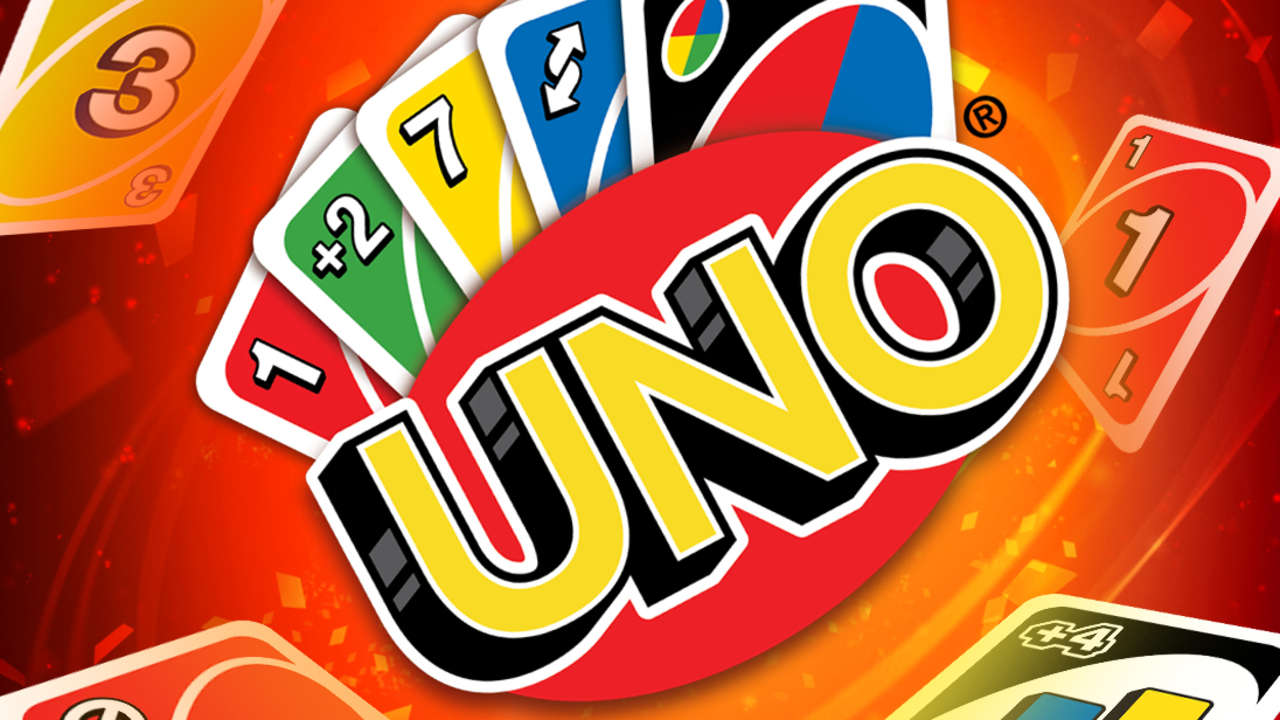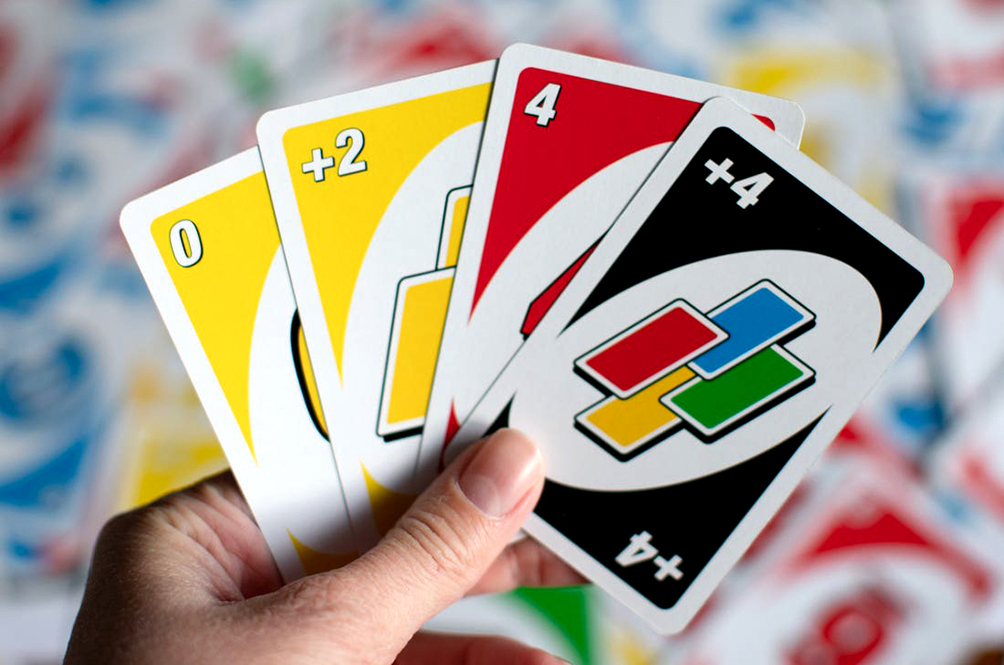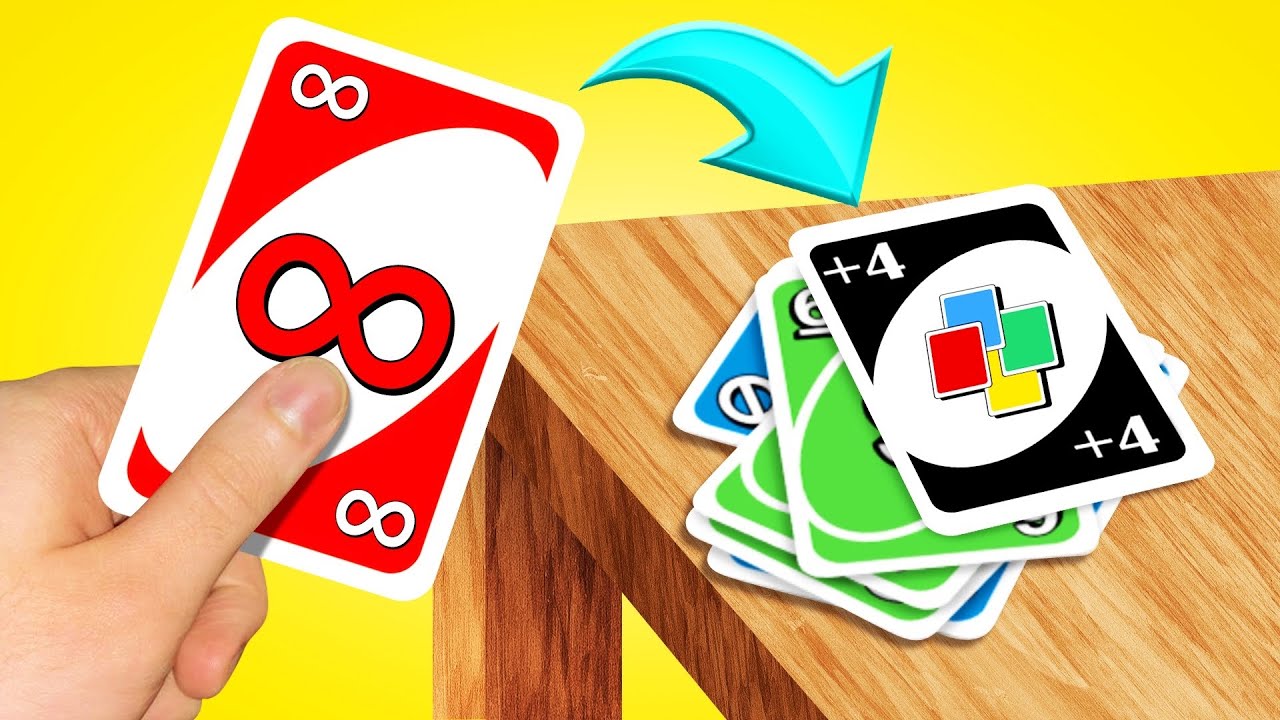
Game: Uno®
Creator: Lewis Saltzman of Saltzman Printers
Platform: Card Game
Target Audience: New or experienced gamers of age 7+
Uno is a multiplayer card game where players are dealt 7 cards. Players take turns putting a card down on the table that is consistent with the pattern set by the player(s) before (match the color, match the number, etc.). The deck contains special cards that add to the challenge and gameplay. The objective of the game is to be the first to get rid of one’s hand. When a player has one card remaining, they must say “Uno” (hence the name) or face a penalty.
Fun is achieved through Challenge and Competition. Playing Uno challenges you to think quickly and play cards so you are the first to get rid of your hand. As a multiplayer game, Uno is competitive since the objective is to be the first amongst the players to win.

4 Kinds of Balance
Balance in Single-Player Games: Balance in single-player games is achieved through pacing. However, since Uno is a multiplayer game, this balance doesn’t apply.
Balance in Asymmetric Games: Although Uno may seem relatively symmetrical, there exist some asymmetries in the game. For example, the first player has an advantage because they set the pattern that the next player needs to follow. Another asymmetry that exists in Uno is the cards players are dealt. Between how well the deck was shuffled and pure luck, one player may get the best hand possible and another the worst. But I believe that these imbalances add to the game dynamic and wouldn’t recommend trying to balance the game any further.
Balance Between Strategies in a Game: For games that have more than one path to outcome/victory, balance is achieved by determining the advantages and disadvantages of each path, and identifying the optimal/dominant strategy to get there. Uno has countless paths to victory since the action of the other players and the hand one has is the determining factor in the outcome. Similarly, since the objective of the game requires that players get rid of all their cards, it means that no player has an advantage over another when the game begins. And although a player might identify a dominant strategy, this is entirely dependent on the card dealt with them and doesn’t necessarily mean suboptimal strategies are ignored.
Balance Between Game Objects: Uno uses cards as game objects. The cost/benefit ratio of the cards depending on the type of card and the current game status. For example, if a player has no cards that adhere to the pattern at play, the player has to draw more cards, making them fall behind in the leaderboard and reducing increasing the cost of their card. Furthermore, if a player has a card they can play at any point in the game (i.e. +4 card or the switch hands card), the cost is very low or none, and the benefits large, potentially resulting in you moving up the leaderboard.



